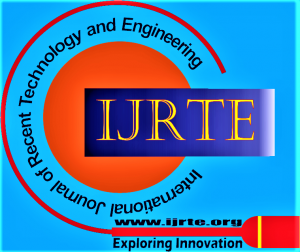![]()
Multi-Scale Feature Pyramid for Detection of Red Lesions in Fundus Images
Goutam Kumar Ghorai1, Swagata Kundu2, Gautam Sarkar3, Ashis Kumar Dhara4
1Goutam Kumar Ghorai, Department of Electrical Engineering, Jadavpur University, Kolkata (West Bengal), India.
2Swagata Kundu, Department of Electrical Engineering, National Institute of Technology Durgapur, Durgapur (West Bengal), India.
3Gautam Sarkar, Department of Electrical Engineering, Jadavpur University, Kolkata (West Bengal), India.
4Ashis Kumar Dhara, Department of Electrical Engineering, National Institute of Technology Durgapur, Durgapur (West Bengal), India.
Manuscript received on 19 October 2023 | Revised Manuscript received on 06 November 2023 | Manuscript Accepted on 15 November 2023 | Manuscript published on 30 November 2023 | PP: 14-19 | Volume-12 Issue-4, November 2023 | Retrieval Number: 100.1/ijrte.D79511112423 | DOI: 10.35940/ijrte.D7951.1112423
Open Access | Editorial and Publishing Policies | Cite | Zenodo | Indexing and Abstracting
© The Authors. Blue Eyes Intelligence Engineering and Sciences Publication (BEIESP). This is an open access article under the CC-BY-NC-ND license (http://creativecommons.org/licenses/by-nc-nd/4.0/)
Abstract: Diabetic retinopathy (DR) is increasing rapidly around the world, but there is a shortage of experienced ophthalmologists. Therefore, computer-based diagnosis of the fundus images is essential to the screening of referable DR. Automated detection of red lesions is very important for the screening of DR. This paper deals with a novel method for automatic detection of red lesions. The main contribution is the development of a deep learning-based detection framework to handle severe class imbalance and size imbalance in red lesions. The multi-scale features are extracted using the feature pyramid network. A pyramid of features is generated with strong semantics. The proposed network is end-to-end trainable at the image level across multiple scales and is effective for a wide range of red lesions, achieving acceptable performance. The sensitivity of the proposed method is 0.76, with six false positives per image on the test set of the publicly available DIARECTDB1 database, and it outperforms state-of-the-art approaches. A potential benefit of a deep learning-based detection framework could be its use in screening programs for referable diabetic retinopathy (DR).
Keywords: Diabetic Retinopathy, Fundus Images, Red Lesions Detection, Feature Pyramid Network, Focal loss
Scope of the Article: Artificial Intelligence
